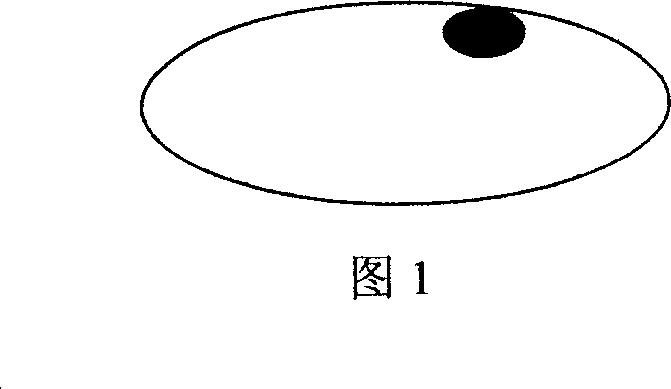Quick immune histochemical detection reagent for milk gland cancer lymph node metastasis and its detecting method
A technology for lymph node metastasis and rapid immunity, which is used in the field of rapid immunohistochemical detection reagents for lymph node metastasis of breast cancer, immunohistochemical detection, and rapid pathological diagnosis of lymph nodes in early breast cancer. The high negative rate, which restricts the clinical application of SLN, has the effect of shortening the staining time, easy operation, and easy popularization and application.
- Summary
- Abstract
- Description
- Claims
- Application Information
AI Technical Summary
Problems solved by technology
Method used
Image
Examples
Embodiment 1
[0046] [Example 1] Materials: 1. positive marker CK19, EMA, MUC1, mammaglobin antibody; 2. negative control marker VEGFR-3, CD31, CD68 antibody, LCA antibody; 3. horseradish peroxidase (HRP); 4. dextran (Dextron); ⑤ Chromogenic oxidation reaction reagent (0.3%H 2 o 2 ); ⑥ Chromogenic agent (3.3-diaminobenzidine, DAB); ⑦ Chromogenic buffer (0.005MolTris-Hcl).
[0047] Firstly, the working concentration of the antibody was determined by ELISA method.
[0048] Specific method: first dilute the antibody with 0.05M PH=9.6 coating buffer to about 10 μg / ml, add 0.1ml to the polystyrene plate well, overnight at 4°C, and wash 3 times with washing buffer the next day. Enzyme-labeled antibody was diluted sequentially with 1% BSA-PBS solution to 1:100, 1:200, 1:400, 1:800, 1:1600..., respectively added to the reaction wells, two wells for each dilution, 0.1 ml, incubated at 37°C for 1 hour and washed. Then add substrate solution, 0.1ml per well, 37°C for 10-30 minutes. Take 2M H 2 S...
Embodiment 2
[0054] [Example 2] Materials: ① positive marker CK19, EMA, MUC1, mammaglobin antibody; ② negative control marker VEGFR-3, CD31, CD68 antibody, LCA antibody; ③ fluorescent pigment; ④ dextran (Dextron); ⑤ color development Oxidation reagent (0.3% H 2 o 2 ); ⑥ Chromogenic agent (3.3-diaminobenzidine, DAB); ⑦ Chromogenic buffer (0.005MolTris-Hcl).
[0055] Firstly, the working concentration of the antibody was determined by ELISA method.
[0056] Specific method: first dilute the antibody with 0.05M PH=9.6 coating buffer to about 10 μg / ml, add 0.1ml to the polystyrene plate well, overnight at 4°C, and wash 3 times with washing buffer the next day. Enzyme-labeled antibody was diluted sequentially with 1% BSA-PBS solution to 1:100, 1:200, 1:400, 1:800, 1:1600..., respectively added to the reaction wells, two wells for each dilution, 0.1 ml, incubated at 37°C for 1 hour and washed. Then add substrate solution, 0.1ml per well, 37°C for 10-30 minutes. Take 2M H 2 SO 4 , 0.05ml t...
PUM
| Property | Measurement | Unit |
|---|---|---|
| thickness | aaaaa | aaaaa |
| molecular weight | aaaaa | aaaaa |
Abstract
Description
Claims
Application Information
 Login to View More
Login to View More - R&D
- Intellectual Property
- Life Sciences
- Materials
- Tech Scout
- Unparalleled Data Quality
- Higher Quality Content
- 60% Fewer Hallucinations
Browse by: Latest US Patents, China's latest patents, Technical Efficacy Thesaurus, Application Domain, Technology Topic, Popular Technical Reports.
© 2025 PatSnap. All rights reserved.Legal|Privacy policy|Modern Slavery Act Transparency Statement|Sitemap|About US| Contact US: help@patsnap.com


